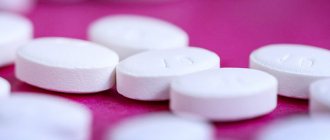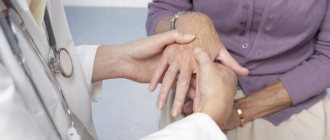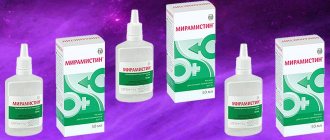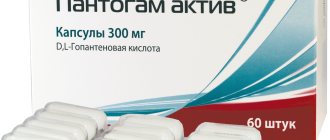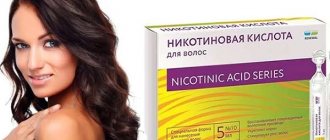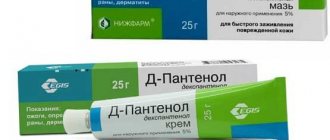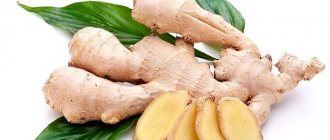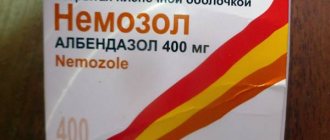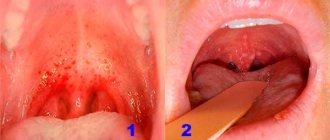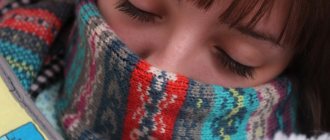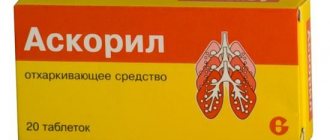October 25, 2019
- How the drug works
- What do paracetamol tablets help with?
- During pregnancy
- Contraindications
- Medical opinion
- Patient reviews of paracetamol
Hello, dear readers of the KtoNaNovenkogo.ru blog.
Paracetamol was synthesized more than 50 years ago, and it is still popular. The drug helps relieve pain and reduce fever.
The “trick” of the medicine is its uniform distribution throughout the tissues.
When it makes sense to use paracetamol, as well as how to use the drug in the treatment of adults and small patients, will be discussed in this review.
Active substance and release forms
The active ingredient is para-acetaminophenol (N-(4-Hydroxyphenyl) acetamide). Chemical formula – C8H9NO2. Paracetamol was synthesized in 1877 and clinical trials took place ten years later. Sales of the drug began in 1953 under the trade name Tylenol (USA). In 1956, Panadol appeared, based on the same chemical substance. Currently, a huge number of paracetamol-containing drugs are produced, which additionally include ingredients such as caffeine, acetylsalicylic acid, codeine, analgin, etc.
Domestic pharmaceutical companies produce Paracetamol in regular tablets (200, 325 and 500 mg), film-coated tablets (Panadol Extra 325 and 500 mg), capsules (325 and 500 mg), and also in the form of rectal suppositories (50 mg each). , 100, 125, 250 and 500 mg).
Pharmacy chains sell soluble tablets of 500 mg - Efferalgan, Panadol Extra, Flutabs and Paracetamol-Hemofarm.
Popular panadol-containing drugs include powders for preparing the solution Fervex and Theraflu.
An injection form is also available - Perfalgan solution (10 mg/ml). For children, you can purchase Panadol Baby and Efferalgan Children's syrups, as well as suspensions for oral administration of Paracetamol for Children, Calpol and Daleron.
Paracetamol 500 instructions for use for children in tablets dose
In case of intolerance to substances that the medicine contains, analogues with other components are selected. The price may vary depending on the manufacturer.
Name
| average price | |
| Nimesulide | tablets - 288 rub. |
| Ibuprofen | capsules - 107 rubles, tablets - 101 rubles. |
| Ibufen | syrup - 118 rub. |
| Efferalgan | effervescent tablets - 209 rubles, syrup - 93 rubles, candles - 540 rubles. |
The drug is used for symptomatic therapy, reduces pain and severe inflammation. Prescribed for:
- myalgia;
- toothache and headache;
- osteoarthritis;
- arthralgia;
- bursitis;
- arthritis.
Take 1 tablet 2 times a day after meals with water. The drug is not recommended for children under 12 years of age. In addition, the instructions for nimesulide indicate the following contraindications:
- hypersensitivity;
- bronchial asthma;
- alcohol consumption;
- flu symptoms;
- heart and kidney failure;
- problems with the gastrointestinal tract;
- pregnancy and breastfeeding period.
Used as an anesthetic for:
- postoperative pain;
- migraine;
- sprains;
- lower back pain;
- treatment of rheumatoid arthritis;
- inflammation of the joint membranes;
- ankylosing spondylitis.
The drug should be taken between meals. Adults are prescribed 2-3 tablets 3-4 times a day. The maximum single dose is 4 tablets, the maximum daily dose is 12 tablets. For children over 12 years of age, the therapeutic dose is 1-2 tablets every 4-6 hours, maximum 5 tablets per day. Ibuprofen suspension is indicated for children under 12 years of age. The dosage is 5-15 ml 3 times a day.
The drug is contraindicated in children under 6 months and weighing less than 7 kg. Children aged 6-12 months are given the drug only as prescribed by a doctor. The antipyretic effect appears after 30 minutes. Repeated use of Ibufen is possible after 6-8 hours. Dosage of Ibufen suspension for children:
- 6-12 months - 2.5 ml 3 times;
- 1-3 years - 2.5 ml 3-4 times;
- 3-6 years - 5 ml 3 times;
- 6-9 years - 5 ml 4 times;
- 9-12 years - 10 ml 3 times;
- Over 12 years old - 10 ml 4 times.
Ibufen ultra capsules are indicated for adults and children over 12 years of age. The drug has an analgesic effect after 10 minutes, and an antipyretic effect after 30. Take 1 capsule 3-4 times a day with an interval of at least 6 hours. The capsule should not be chewed, as this reduces the effect of the drug. Ibufen is indicated for:
- colds (ARVI, flu)
- ENT diseases (sore throat, ear pain);
- increased temperature after preventive vaccinations;
- toothache and teething;
- pain in muscles and joints;
- headache (migraine).
The drug is available in the form of effervescent tablets, syrup and rectal suppositories. Efferalgan tablets are not used:
- with alcoholism;
- in the 1st and 3rd trimester of pregnancy and during pregnancy;
- patients under 15 years of age and weighing less than 50 kg;
- in case of hypersensitivity to the active substance.
Before use, dissolve 1-2 tablets in a glass of water (200 ml). Maintain an interval of at least 4 hours between doses. The maximum dose per day is 8 pieces. A single dose of Efferalgan for children is calculated taking into account the child’s weight: 10-15 mg per kg of weight. The maximum daily dose should not exceed 60 mg/kg of the child's weight. The interval between doses is 4-6 hours. Suppositories are applied rectally. A single dose is:
- children under 3 months - 10 mg per kg
- children aged 3-12 months 60-120 mg;
- children 1-5 years old - 120-150 mg;
- children 6-12 years old - 250-500 mg;
- adults and adolescents weighing more than 60 kg - 500 mg.
Note! Suppositories and syrup are contraindicated for children under 1 month.
source
When a child has a fever, the first medicine that parents use to stabilize the condition is paracetamol, and this is not without reason.
The World Health Organization included this drug in the list of the most effective, safe and cost-effective medicines.
Let's take a closer look at the instructions for using Paracetamol tablets for children (200 and 500 mg): recommended dosages for fever, is it possible to give the medicine to a child at all and how much, what to do if the norm is exceeded?
Paracetamol is not new in the pharmaceutical field . It has been used for treatment since 1893. This is one of the safest non-steroidal anti-inflammatory drugs.
The drug has almost no effect on cyclooxygenase, or COX, which is produced in peripheral organs and tissues. Therefore, it has fewer side effects than other NSAIDs .
The medicine does not irritate the gastric mucosa and does not lead to disruption of water and mineral metabolism.
At the same time, the drug affects COX, which is produced by the brain, which is responsible for its antipyretic and analgesic properties. The drug has almost no ability to influence inflammatory processes.
Paracetamol is well absorbed from the gastrointestinal tract , so tablet dosage forms along with rectal suppositories are most preferable.
The drug acts quickly, and its highest concentration is observed within 30 minutes after oral administration. The effect lasts up to 4 hours.
The lack of effect when using Paracetamol is a reason to immediately seek medical help.
If you want to know how to treat herpetic sore throat in children, we recommend reading our publication.
The following article will tell you about the symptoms and treatment of acute pyelonephritis in children.
The causes and methods of treating enuresis in children are discussed in detail in this material. Find out more!
The drug is available in tablets of 0.2 g and 0.5 g (200 and 500 mg). This form is recommended for children over 6 years of age due to possible overdose.
According to its physical properties, it is a pure white or creamy, pinkish crystalline powder that dissolves in alcohol and is insoluble in water.
The drug is used if:
- the temperature rises to 38 °C and above (age up to 5 years), to 38.5 °C (age after 5 years) and lasts for at least 4 hours;
complaints of toothache, headache, muscle pain.
Paracetamol is effective specifically for viral infections (ARVI).
The remedy is also used for chicken pox, measles, flu, rubella, teething, after injuries and burns.
It does not help with bacterial infections, complications of ARVI, the effect is short-lived or absent.
The list of contraindications is small compared to other medications. This includes:
diseases of the gastrointestinal tract with the formation of ulcers and erosions, gastric bleeding, inflammation, active bleeding;
progressive pathologies of the kidneys, liver, severe forms of failure of these organs;
intolerance to acetylsalicylic acid or other NSAIDs;
hyperkalemia (increased potassium levels in the blood).
The maximum course of treatment is:
What dose of Paracetamol tablets is needed for children, how to take the medicine correctly?
A single dose of Paracetamol in tablets for children weighing 10 kg is 100–150 mg (0.1–0.15 g), or 1/2–3/4 tablets with a dosage of 200 mg (0.2 g).
The re-appointment should be no earlier than after 4-5 hours . 4–5 doses are allowed per day.
A safe daily dose is up to 60 mg/kg body . This means that a child weighing 10 kg should not be given more than 3 tablets of 200 mg per day.
For adolescents over 12 years of age who weigh more than 40 kg , the maximum single dose is 1 g (5 tablets of 0.2 g), daily dose is 4 g (20 tablets of 0.2 g).
The drug is given orally . After eating, 1–2 hours must pass, otherwise absorption will slow down. Drink with plenty of clean water. If the child is small, then the tablet is crushed into powder.
Paracetamol is an emergency medicine that does not treat , but only eliminates the manifestations of the disease. If the cause of the disease is not eliminated, the fever and pain will return.
What is the effective and safe treatment for sinusitis in children? Find the answer to your question in our article.
Eye exercises for myopia in children are presented in this publication.
Read all the details about chronic mononucleosis in children and methods of treatment and prevention here.
The question of what dose of paracetamol to give a child in tablets must be decided after consultation with a doctor. When treating, the following features of admission are taken into account:
when using other drugs simultaneously, you need to make sure that they do not contain paracetamol;
Do not give your child alcohol-containing medications, as alcohol enhances the absorption of the medication.
Taking the drug in a single dose of more than 150 mg/kg of a child’s body weight causes severe, and in some cases, fatal liver damage.
Stages of poisoning:
| Stage | Manifestations | Period |
| First | Laboratory values are normal, nausea occurs, and the child vomits | On the first day |
| Second | Laboratory parameters change, the level of liver enzymes AST and ALT in the blood is above 1000 U/L | In a day or more |
| Third | Characterized by high activity of liver enzymes, high levels of bilirubin, disturbances in the acid-base balance of the blood, and decreased glucose levels | 72–96 hours |
The development of liver failure is indicated:
pain in the right side under the ribs;
heart rhythm disturbances;
insufficiency of functions of other organs.
In case of overdose, wash the stomach , give the patient activated charcoal, and call an ambulance. The antidote for paracetamol is acetylcysteine.
In case of liver failure, hospitalization is carried out , treatment is symptomatic. In severe cases, a liver transplant may be required.
Children tolerate poisoning more easily than adults, especially those under 6 years of age , due to their metabolic characteristics. In mild cases, treatment is carried out at home.
The safe dosage of the drug is 0.2 mg . So, for a child weighing 10 kg to become poisoned, he needs to take 1.5 g of the drug per day orally, which is 7.5 tablets.
Exceeding the dose occurs for several reasons:
other drugs were given at the same time with paracetamol;
the baby accidentally took the medicine on his own because it was in an accessible place.
Although Paracetamol is well tolerated in most cases, it causes side effects :
| System | Effect |
| Blood | Anemia, thrombocytopenia, leukopenia (decreased platelet and white blood cell levels), methemoglobinemia |
| Discharge | Kidney colic, pyuria (pus in urine), glomerulonephritis (kidney disease) |
| Nerves | Increased excitability or drowsiness |
| Heart, blood vessels | Heart muscle dysfunction |
| Digestion | Abdominal pain, nausea |
| Allergy | Skin rash, itching, angioedema |
In recent years, scientists have started talking about harm and toxicity .
Safety is maintained with infrequent use.
There is also evidence that with long-term use of Paracetamol more than 1 tablet per day , if the total amount of medication taken is 1000 or more tablets over a lifetime, the risk of developing severe forms of analgesic nephropathy (kidney disease), which leads to end-stage renal failure (complete loss of kidney function).
Paracetamol interacts with other drugs , which may affect the safety of therapy.
The following effects may be observed:
- increased harmful effects on the liver, decreased antipyretic effect of Paracetamol in combination with barbiturates, antiepileptic drugs, rifampicin;
enhancing the effect of coumarin derivatives, salicylic acid, caffeine, codeine;
increased methemoglobin levels - when used simultaneously with phenobarbital.
It is prohibited to combine Paracetamol tablets with other products that contain this active ingredient (Parafex, Paravit, Cold-flu, Coldrex and others).
The average price of Paracetamol 0.2 g, 10 tablets is 6 rubles.
The expiration date is indicated on the packaging (usually 36 months). Store the drug at a temperature no higher than 25 °C, choosing a place inaccessible to children.
A prescription is not needed to purchase the medicine.
Do you want to know how to cure obstructive bronchitis in a child? We'll tell you! Useful tips and recommendations are in our article.
You can learn about the types of strabismus in children and how to eliminate it from this article.
And here we told you everything about the treatment of conjunctivitis in children, including the advice of Dr. Komarovsky.
Now you know how to give paracetamol tablets to children, how much medicine to give and what dosage to follow to avoid an overdose. Let's consider the reviews from parents.
Natalya, 28 years old : “Paracetamol helped our son at first. Then they gave me pills - the effect lasted for an hour. Then she gave Nurofen syrup and put suppositories with paracetamol.”
Elena, 30 years old : “Paracetamol has no effect on my baby’s body. I gave the pill, waited an hour and a half, and the effect was zero.”
Yulia, 32 years old : “For bacterial acute respiratory infections, I use Ibuprofen or Paracetamol: the first acts in a quarter of an hour, the second in an hour. For viruses, I give either one or the other drug, both work within an hour. If the temperature persists, we alternate these remedies.”
source
Paracetamol 500 is an analgesic drug. It is used for pain, fever and as an anti-inflammatory. The safest medicine among non-steroidal anti-inflammatory drugs of its group.
One 500 mg tablet contains:
- active substance: paracetamol;
- excipients: gelatin, potato starch, talc, glycerol, calcium stearate.
Drugs produced by different companies may differ slightly in the composition of excipients.
It has analgesic, anti-inflammatory and hypothermic effects. Used to relieve pain and toothache. Used for discomfort and fever due to lesions of the genitourinary system and kidney diseases.
White tablets 500 mg, 10 pcs. in plastic blisters or in paper currency, packed in a cardboard box. The shape of the tablets varies depending on the manufacturing company.
The medication blocks cyclooxygenase in the central nervous system.
Due to vasodilation and increased blood flow in the closed system of the heart and blood vessels, a decrease in body temperature occurs during fever.
Does not irritate the mucous membranes of the digestive system. Slows down the synthesis of prostaglandins, affecting the area of thermoregulation in the hypothalamus.
It does not affect the synthesis of prostaglandins in muscles and adipose tissue, resulting in the drug having no negative effect on water-salt metabolism and mucous tissues of the gastrointestinal tract. Has no effect on blood pressure.
Quickly absorbed into body tissues. After ingestion, it is completely absorbed into the gastrointestinal tract. The highest concentration in the blood is achieved 2-3 hours after administration. Evenly distributed throughout the tissues of the body. The ability of cells to absorb this drug in children and adults is almost the same. Less than 1% of the drug enters the breast milk of lactating women.
With an overdose or deficiency of the tripeptide γ-glutamylcysteinylglycine, cell death of the liver parenchyma can occur.
Most of the drug substances are metabolized in the liver when combined with glucuronide, with sulfate and during oxidation with the help of mixed organ oxidases and cytochrome P450-dependent monooxygenase.
The half-life is approximately 2-2.5 hours. In elderly patients and patients with liver disorders, it increases. One day after consuming the drug, about 80-90% of the substances are excreted through the kidneys in the form of glucoronides and sulfates.
The use of the drug is recommended in the following cases:
- headache, migraine;
- toothache;
- neuralgia;
- muscle pain;
- menstrual pain;
- pain from injuries, burns;
- increased temperature in infectious and inflammatory diseases.
Used as an anti-inflammatory and antipyretic agent for pyelonephritis.
Prescribed as a complex antipyretic in the treatment of cystitis, which may be accompanied by an increase in body temperature.
For urethritis it is used as a pain reliever.
The drug relieves pain when kidney stones pass.
Tablets or capsules are taken orally between meals with plenty of clean water.
Adults, older adults, and adolescents over 12 years of age take 1,000 mg every 4 hours. The maximum daily dose should not exceed 4000 mg. Divide the required daily dose into 4 doses.
This drug can be given in tablet form to children over 2 years of age. For every kilogram of weight there is no more than 10 mg of the drug. Apply at intervals of every 3-4 hours, no more than 4 times a day. Before use, crush the tablet to a powder and add a little water. When compiling a children's dosage, it is necessary not to exceed the specified norm in order to avoid negative effects on the child's body.
At fever, the duration of treatment should not be more than 3 days in a row. If after this period the temperature continues to remain high, you should immediately consult a doctor.
The use of the medication is prohibited in the following cases:
- intolerance to the components of the drug;
- age up to 6 years;
- severe liver and kidney disorders;
- severe blood diseases;
- erosions or stomach ulcers;
- chronic alcoholism;
- viral hepatitis;
- benign hyperbilirubinemia: Gilbert's syndrome;
- lack of glucose-6-phosphate dehydrogenase in the body.
From the cardiovascular system: thrombocytopenia, decreased white blood cell count, pancytopenia, neutropenia, agranulocytosis.
From the gastrointestinal tract: heartburn, nausea, vomiting, belching, heaviness in the abdomen, rumbling, diarrhea, toxic liver poisoning.
Allergic reactions: skin rash, itching, urticaria, angioedema, Quincke's edema.
This medication has extremely low toxicity, but if taken in extremely high doses it can lead to serious consequences for the body.
There are 4 stages of overdose with this drug:
- Acute intoxication of the body. It develops 1-2 hours after administration and lasts about a day. At this stage, such general signs of illness as weakness, nausea, vomiting, headache, and pale skin are characteristic.
- Damage to the tissue of the gallbladder, liver and bile ducts begins. Develops within 1-2 days from the start of treatment. Symptoms characteristic of the first stage begin to intensify. The amount of urine excreted decreases. The patient feels pain and heaviness in the right side.
- Symptoms of liver damage increase between 72 and 96 hours. The skin becomes yellowish in color, the level of liver enzymes increases, the pain in the right side intensifies, the following are observed: complete loss of appetite, constant vomiting, tachycardia, bleeding, hallucinations, and a severe decrease in urine output.
- In the period from 5 days to 2 weeks, either the restoration of damaged body tissues or the death of the patient occurs.
In case of overdose, it is necessary to rinse the stomach. Take a large amount of clean water (about 1 liter) and induce vomiting. If symptoms worsen, seek medical help immediately.
The dosage regimen depends on the age and condition of the patient.
During clinical studies, no embryotoxic, teratogenic or mutagenic effects on the fetus were detected.
Less than 1% of the drug passes into breast milk.
The drug in tablets can be given to children who are at least 2 years old. For every kilogram of a child’s weight, no more than 10 mg of medication should be taken.
Do not take if you have severe renal impairment.
Do not take if you have severe liver dysfunction.
When used with inducers of microsomal liver enzymes and agents that have a negative effect on the organ, the toxic effect increases.
When used with substances that reduce blood clotting (anticoagulants) and prevent the formation of blood clots, the time period for plasma clotting increases.
When used with substances that block the action of the natural mediator - acetylcholine - on cholinergic receptors, the absorption of the active substance of the drug may be reduced. When used with oral contraceptives, the time for elimination of the active substance from the body increases and its analgesic effect decreases.
When used with anti-gout drugs, their effectiveness decreases. When used with activated carbon, the absorption of the active substance is reduced. When used with Diazepam, it is possible to reduce the release of the latter.
Sometimes, when used simultaneously with the drug, the myelosuppressive effect of Azidotimidine increases. Cases of severe toxic liver damage have been reported. When using a medicine with isonicotinic acid hydrazide (Tubazid), cases of increased toxic effects on the body have been recorded.
When used with Carbamazepine, Phenytoin, Phenobarbital, Primidone, the effect of the active substance of the drug is reduced, its metabolism (the process of removing toxic and potentially toxic substances from the body and oxidation) and removal from tissues increases. Cases of liver toxicity have been reported when used with Phenobarbital.
Sometimes, when using Kolestyramine within 1 hour after taking the drug, it reduces the absorption of the latter. Barbiturates reduce the antipyretic effect.
When used with Lamotrigine, the excretion of the latter from the body increases. Consumption with salicylates increases the risk of liver toxicity. Sometimes when used with Metoclopramide, there is an increase in absorption of the active substance and an increase in its concentration in the blood plasma.
Caffeine sometimes enhances the analgesic effect of the drug.
Do not take together with other drugs containing paracetamol - this can lead to exceeding the dose and poisoning the body.
When used with Ethinyl estradiol, absorption of the active substance of the drug from the gastrointestinal tract increases.
- Akamol-Teva.
- Acetylsalicylic acid.
- Aldolor.
- Apap.
- Acetaminophen.
- Ibuprofen.
- Nimesulide.
- Meloxicam.
- Children's Panadol
- Children's Tylenol.
- Ifimol.
- Cyclofenac.
- Calpol.
- Xumapar.
- Lupocet.
- Meksalen.
- Pamol.
- Panadol.
- Perfalgan.
- Passer.
- Sanidol.
- Strimol.
- Tylenol.
- Febricet.
- Tsefekon D.
Store in a dark, dry place at temperatures up to 15°C. Shelf life: 2 years from the date of issue.
Dispensed without a doctor's prescription.
Pack of 10 tablets - about 10 rubles.
Pack of 20 tablets - about 20 rubles.
I take one tablet when I have a headache or lower back pain during PMS. Helps with mild headaches, but is not always effective for migraines. It only gives relief for a few hours. It relieves menstrual pain in the lower abdomen, but I have to wait about half an hour before the drug starts working, so I try to use other medications. And for flu and colds it is indispensable! Reduces fever within 10 minutes.
I have been taking it since childhood. Now we give it to our children when they have a cold or the flu. Relieves high fever well. Remember that it should not be given to very young children. One tablet is enough. Do not overdo it with the dose, so that you do not suffer from an overdose later.
Evgeniy Viktorovich, dentist, Vladimir
Reduces chills and fever in the shortest possible time. The drug begins to act approximately 10 minutes after administration. True, a person begins to sweat a lot, but it’s worth it. Suitable for both adults and young patients. The medication has no particular side effects - the main thing is to follow the dosage. We are especially pleased with its low price, which makes it accessible to all categories of the population.
Anastasia Grigorievna, neurologist, St. Petersburg
This is a good antipyretic. It is sometimes used as an analgesic. This drug can be found in almost any home medicine cabinet. It is inexpensive and effective. It also has almost no side effects and is available without a doctor's prescription. In my practice, I have not yet encountered any complaints about him. I recommend always keeping it in your home or car first aid kit.
source
Did you like the article? Share with your friends!
21
Benefits of Paracetamol
Para-acetaminophenol acts on the thermoregulation center located in the hypothalamus, making its antipyretic effect as close as possible to the process of natural decrease in body temperature. The undoubted advantage of Paracetamol over NSAIDs is its selectivity of action, which makes it possible to use it for the treatment of children. In addition, drug metabolism products very quickly leave the body naturally, which eliminates cumulation (accumulation) in organs and tissues.
Medicine Paracetamol analogues cheap
If you want to diversify the treatment process and get more effect from it, you should pay attention to products that can replace medicine
- Cefekon
. This is an effective drug intended for the treatment of the same range of diseases, having the same limitations and contraindications. The cost is around 125 rubles, for this money you can get a quick effect. - Efferalgan
. This remedy is no cheaper than Paracetamol, but its effect can easily be compared with it. The product is produced in France and has a wide range of different therapeutic qualities aimed at achieving instant and rational results. - Panadol for children
. The product is traditionally used by children. The country of origin is Great Britain. The price for a package of a therapeutic product is 65 rubles. By the way, there is a similar medicine for sale for adults that costs 53 rubles. - Tsefekon
D. The cost of this drug is from 60 rubles in Russian pharmacies. The country of origin of suppositories and cold tablets is Russia. For this money, the patient can count on quick treatment results.
When considering the drug Paracetamol, there are no cheap analogues, since the product itself costs a penny. But you can find imported similar compositions at affordable prices, which have a wide range of influences.
The drug Paracetamol is a non-narcotic pain reliever with a pronounced antipyretic and weak anti-inflammatory effect. It is used to treat pain of various origins and severity (usually mild or moderate), as well as to reduce body temperature in infectious and inflammatory pathologies of various origins. Paracetamol tablets are contraindicated in cases of anemia, individual intolerance, alcohol dependence and severe pathological disorders of the kidneys or liver.
The product is packaged in blister packs of 10 units, followed by packaging in cardboard packs of 10–20 tablets.
Paracetamol: indications for use
Paracetamol is a drug intended to relieve symptoms. It does not affect the dynamics of the pathological process in any way. The most common indications for starting to take this drug are increased body temperature (hyperthermia) due to colds and viral diseases, as well as pain (aches) in the bones and muscles during influenza and other acute respiratory viral infections.
Diseases and pathological conditions for which acetaminophen is recommended:
- headache (including migraine);
- arthralgia (joint pain);
- myalgia (muscle pain);
- neuralgia;
- fever of unspecified origin;
- sciatica;
- arthrosis;
- toothache;
- algodismenorrhea (painful periods).
Synonyms of nosological groups
| Category ICD-10 | Synonyms of diseases according to ICD-10 |
| G43 Migraine | Migraine pain |
| Hemicrania | |
| Hemiplegic migraine | |
| Migraine headache | |
| Migraine | |
| Migraine attack | |
| Serial headache | |
| K13.7 Other and unspecified lesions of the oral mucosa | Aspirin burn of the oral mucosa |
| Sore gums when wearing dentures | |
| Oral inflammation | |
| Inflammation of the oral mucosa | |
| Inflammation of the oral mucosa after radiation therapy | |
| Inflammation of the oral mucosa after chemotherapy | |
| Inflammation of the oral mucosa | |
| Inflammation of the mucous membranes of the oral cavity | |
| Inflammatory diseases of the oral cavity | |
| Inflammatory process of the pharynx | |
| Disease of the oral mucosa | |
| Radioepithelitis | |
| Irritation from dentures | |
| Irritation of the oral mucosa by dentures and braces | |
| Oral wounds | |
| Sores from wearing dentures | |
| Injuries to the oral cavity and larynx | |
| Injuries to the oral mucosa | |
| Trophic diseases of the oral mucosa | |
| Trophic diseases of the oral mucosa | |
| Erosive and ulcerative periodontal lesions | |
| Erosive and ulcerative lesions of the oral mucosa | |
| Erosive and ulcerative periodontal lesions | |
| Erosive and ulcerative lesions of the oral mucosa | |
| Erosion of the oral mucosa | |
| M25.5 Joint pain | Arthralgia |
| Pain syndrome in muscular and joint diseases | |
| Pain syndrome in osteoarthritis | |
| Pain syndrome in osteoarthritis | |
| Pain syndrome in acute inflammatory diseases of the musculoskeletal system | |
| Pain syndrome in chronic inflammatory diseases of the musculoskeletal system | |
| Pain in the joints | |
| Joint pain | |
| Joint pain during heavy physical activity | |
| Painful inflammatory joint lesions | |
| Painful conditions of the musculoskeletal system | |
| Painful joint conditions | |
| Painful traumatic joint lesions | |
| Pain in the musculoskeletal system | |
| Shoulder pain | |
| Joint pain | |
| Joint pain | |
| Joint pain due to injury | |
| Musculoskeletal pain | |
| Osteoarthritis pain | |
| Pain due to joint pathology | |
| Rheumatoid arthritis pain | |
| Pain in chronic degenerative bone diseases | |
| Pain in chronic degenerative joint diseases | |
| Osteoarticular pain | |
| Rheumatic pain | |
| Rheumatic pains | |
| Joint pain | |
| Joint pain of rheumatic origin | |
| Joint pain syndrome | |
| Joint pain | |
| M79.1 Myalgia | Pain syndrome in muscular and joint diseases |
| Pain syndrome in chronic inflammatory diseases of the musculoskeletal system | |
| Pain in the muscles | |
| Muscle soreness | |
| Muscle soreness during heavy physical activity | |
| Painful conditions of the musculoskeletal system | |
| Pain in the musculoskeletal system | |
| Muscle pain | |
| Pain at rest | |
| Muscle pain | |
| Muscle pain | |
| Musculoskeletal pain | |
| Myalgia | |
| Myofascial pain syndromes | |
| Muscle pain | |
| Muscle pain at rest | |
| Muscle pain | |
| Muscle pain of non-rheumatic origin | |
| Muscle pain of rheumatic origin | |
| Acute muscle pain | |
| Rheumatic pain | |
| Rheumatic pains | |
| Myofascial syndrome | |
| Fibromyalgia | |
| N94.6 Dysmenorrhea, unspecified | Algomenorrhea |
| Algomenorrhea | |
| Pain syndrome due to smooth muscle spasms | |
| Pain syndrome due to smooth muscle spasms (renal and biliary colic, intestinal spasms, dysmenorrhea) | |
| Pain syndrome due to spasms of smooth muscles of internal organs | |
| Pain syndrome due to spasms of smooth muscles of internal organs (renal and biliary colic, intestinal spasms, dysmenorrhea) | |
| Pain during menstruation | |
| Painful, irregular periods | |
| Pain during menstruation | |
| Pain during menstruation | |
| Dysalgomenorrhea | |
| Dysmenorrhea | |
| Dysmenorrhea (essential) (exfoliative) | |
| Menstrual disorder | |
| Menstrual crumpies | |
| Menstruation is painful | |
| Metrorrhagia | |
| Menstrual irregularities | |
| Menstrual irregularities | |
| Primary dysalgomenorrhea | |
| Prolactin-dependent menstrual disorder | |
| Prolactin-dependent menstrual dysfunction | |
| Menstrual disorder | |
| Spasmodic dysmenorrhea | |
| Functional disorders of the menstrual cycle | |
| Functional disorders of the menstrual cycle | |
| R50 Fever of unknown origin | Hyperthermia malignant |
| Malignant hyperthermia | |
| R51 Headache | Head pain |
| Pain due to sinusitis | |
| Pain in the back of the head | |
| Headache | |
| Headache of vasomotor origin | |
| Headache of vasomotor origin | |
| Headache with vasomotor disturbances | |
| Headache | |
| Neurological headache | |
| Serial headache | |
| Cephalgia | |
| R52 Pain not elsewhere classified | Pain syndrome of radicular origin |
| Pain syndrome of low and medium intensity of various origins | |
| Pain syndrome after orthopedic surgery | |
| Pain syndrome in superficial pathological processes | |
| Radicular pain due to spinal osteochondrosis | |
| Radicular pain syndrome | |
| Pleural pain | |
| Chronic pain | |
| R52.2 Other persistent pain | Pain syndrome of non-rheumatic origin |
| Pain syndrome with vertebrogenic lesions | |
| Pain syndrome with neuralgia | |
| Pain syndrome from burns | |
| Pain syndrome is mild or moderate | |
| Neuropathic pain | |
| Neuropathic pain | |
| Perioperative pain | |
| Moderate to severe pain | |
| Moderate or mild pain syndrome | |
| Moderate to severe pain syndrome | |
| Ear pain due to otitis media |
- severe functional disorders of the liver and kidneys;
- hereditary absence of glucose-6-phosphate dehydrogenase (suppositories, suspension);
- age up to 1 month (syrup, suspension), 6 months (suppositories), 3 years (tablets);
- diseases of the blood system (suspension);
- anemia (syrup);
- alcoholism (syrup);
- first trimester of pregnancy (syrup);
- hypersensitivity to the components of the drug.
- daily dose – not higher than 5 g;
- recommended dosage – from 2 tablets per 1 dose;
- frequency of use – 3-4 times a day.
Directions for use and dosage of Paracetamol
Acetaminophen has a therapeutic effect when taken in doses of 10-15 mg per 1 kg of body weight.
Oral forms of Paracetamol (tablets or syrup) are recommended to be taken 1-2 hours after meals with plenty of liquid (preferably clean water). Taking on a full stomach slows down absorption and, therefore, the development of the expected therapeutic effect.
Paracetamol in the form of suppositories is administered rectally (1 suppository).
The recommended single dosage for adult patients and adolescents over 12 years of age (or weighing over 40 kg) is 1 g (2 tablets of 0.5 g each), and the daily dosage is 4 g.
For children under 12 years of age, the dose is determined individually at the rate of 10-15 mg per 1 kg of weight (60 mg/kg per day). Frequency – up to 4 times a day; It is advisable to maintain approximately equal time intervals between doses.
For babies from 3 months. up to 1 year, the dosage ranges from 24 to 120 mg (up to 4 times a day), and children from 1 year to 6 years are given 120-240 mg per dose.
It is not advisable to take Paracetamol for more than 5 days in a row. If the fever lasts longer than 3 days, and the pain persists for more than 5 days, you should consult your doctor . Usually in such cases it is recommended to replace the drug with another analgesic and antipyretic. To reduce the risk of undesirable consequences, it is advisable to limit yourself to the minimum effective doses and strictly adhere to the dosage regimen.
Interaction of paracetamol with other drugs
- The most common drug is the interaction between caffeine and paracetamol. This combination of agents acts on the body with redoubled force. Paracetamol brings down the temperature, and caffeine helps to increase this property. This medicine is often used for headaches and low blood pressure.
- Also in medicine, another combination is used in the form of no-shpa and paracetamol. This combination copes well with fever and pain in the head. The product is especially suitable for treating children. No-spa is aimed at eliminating spasms in blood vessels, and paracetamol leads to normalization of body temperature.
- Often in practice, the interaction of aspirin and paracetamol is used. These drugs have one effect, but aspirin is aimed at thinning the blood. Although paracetamol is the safest remedy and has fewer contraindications. It is better not to combine such remedies with each other, but to take them one at a time.
- Paracetamol and ibuprofen are best taken together. Although the active substance is different, they have the same effect. Moreover, iboprofen has great anti-inflammatory properties and has a wide range of effects. In some situations, when paracetamol does not cope, the use of ibufen is prescribed. After all, it copes much better with lowering temperatures.
- To eliminate a feverish state due to allergies in patients, the interaction of paracetamol and suprastin is used. These products are often recommended for use after vaccination in young children. This will help avoid allergies, fever and pain.
- Nurofen and paracetamol have different active ingredients. It is believed that Nurofen is safer, less allergenic and has a mild effect on lowering temperature. Taking them at the same time is not recommended.
Taking any medication orally puts a strain on the liver and kidneys. Therefore, for diseases of these organs, it is recommended to replace paracetamol in tablets and syrup with suppositories. The effect will occur in thirty to sixty minutes and will last up to eight hours.
pharmachologic effect
The active substance is able to block the enzyme cyclooxygenase (COX1 and COX2), thereby reducing the level of production of pain mediators - prostaglandins. The drug has a direct effect on the thermoregulation and pain centers located in the brain. There is reason to believe that the pronounced antipyretic and analgesic effects are due, among other things, to the selective blockade of COX 3, an enzyme that accelerates the synthesis of prostaglandins and is involved in the formation of fever and pain.
This drug has relatively weak anti-inflammatory properties, since it is neutralized by peripheral tissue peroxidases. Paracetamol does not have a negative effect on water-electrolyte metabolism.
Reviews
Now you know how to give paracetamol tablets to children, how much medicine to give and what dosage to follow to avoid an overdose. Let's also consider reviews from parents.
Natalya, 28 years old : “Paracetamol helped our son at first. Then they gave me pills, the effect lasted for an hour. Then she gave Nurofen syrup and put suppositories with paracetamol.”
Elena, 30 years old : “Paracetamol has no effect on my baby’s body. I gave the pill, waited an hour and a half, and the effect was zero.”
Yulia, 32 years old : “For bacterial acute respiratory infections, I use Ibuprofen or Paracetamol: the first acts in a quarter of an hour, the second in an hour. For viruses, I give either one or the other drug, both work within an hour. If the temperature persists, we alternate these remedies.”
Among the popular means of combating fever and pain in children are tablets, where the active substance is paracetamol. It is considered the most effective and safe for the child’s body.
Paracetamol-based drugs have three main properties: they relieve fever, inflammation and pain.
Advantages of the drug:
- Fights high body temperature during colds, ARVI or flu. It can be given to children aged 2 months, after first reducing the permissible dose.
- The decrease in temperature begins quickly and has a long-lasting effect - no further increase is observed.
- In some children, high fever may be accompanied by seizures. Paracetamol is also allowed for such unpleasant symptoms.
- Reduces or eliminates pain. For example, dental or headache.
- Other medications can be given at the same time. Nurofen contains ibuprofen as an active ingredient, so alternating them is allowed.
It should be taken into account that paracetamol eliminates only the symptoms of the disease, but is not intended for its treatment. The main cause of pain or fever should be identified and children treated with other medications.
Pharmacodynamics
After oral administration, Paracetamol is rapidly absorbed from the digestive tract. The time to reach maximum serum concentration can vary from 30 minutes. up to 2 hours. About 15% of the active substance is conjugated with plasma proteins. The drug freely passes the blood-brain barrier. Most of the substance undergoes biotransformation in the liver. The half-life is from 1 to 4 hours (in elderly patients it is slightly longer). Metabolites (sulfates and glucoronides) and para-acetaminophenol unchanged (about 3%) are excreted in the urine.
Paracetamol: contraindications
Contraindications include:
- individual hypersensitivity (increased sensitivity) to the active substance;
- “aspirin triad” (a combination of intolerance to NSAIDs, bronchial asthma and recurrent polyposis of the nose and paranasal sinuses);
- inflammatory diseases, erosions and ulcers of the gastrointestinal tract;
- gastrointestinal bleeding;
- severe functional renal failure;
- diagnosed hyperkalemia;
- condition after coronary artery bypass surgery.
Important: Paracetamol-containing drugs are contraindicated in newborns in the first month of life.
Particular caution should be exercised when taking this drug in case of the following diseases and pathological conditions:
- chronic alcoholism and alcoholic liver damage;
- coronary heart disease and chronic heart failure;
- cerebrovascular diseases;
- peripheral arterial lesions;
- renal and liver failure.
Please note: if you have diabetes, it is not recommended to take Paracetamol in syrup form.
special instructions
To avoid exceeding the maximum daily dose of paracetamol, other medicines containing this substance should not be taken simultaneously with Paracetamol for children.
In case of glutathione deficiency, the drug is prescribed with caution, since there is a high probability of overdose and the development of liver failure.
In infants, Paracetamol for children can be used only as prescribed by a doctor.
Before conducting tests to determine glucose and uric acid in the blood, you must inform your doctor about taking the drug, as it may change the laboratory test data.
The lack of effect within three days after the start of treatment is an indication to consult a doctor to clarify the diagnosis.
Patients taking the drug for more than five days are recommended to periodically undergo blood tests to determine its peripheral parameters and monitor the functional state of the liver.
The suspension contains sucrose and sorbitol, which must be taken into account before prescribing the drug to patients with diabetes (every 5 ml of the drug contains 0.25 XE).
Paracetamol suspension for children does not affect the patient’s abilities necessary to drive vehicles and other complex mechanisms.
When taking Paracetamol in any form, you must remember the following:
- You cannot combine it with other medications that contain paracetamol - this will lead to an overdose of the substance.
- The syrup contains sucrose and sorbitol in significant quantities. This is taken into account if the child has diabetes. 5 ml of suspension contains 0.25 bread units.
- When taking a course of more than 6 days, monitor liver function and systematically monitor changes in blood counts.
- After taking paracetamol, blood plasma levels such as glucose and uric acid may be incorrect.
- Paracetamol does not affect the nervous system or concentration, so there are no special instructions for driving. The substance does not change motor activity.
The combination of Paracetamol with other medications is discussed with the pediatrician. Since long-term use in combination with salicylates (painkillers based on salicylic acid) increases the risk of developing kidney cancer.
The simultaneous use of paracetamol and the antibiotic "Chloramphenicol" increases the toxicity of the latter and can cause side effects in the form of intoxication of the body. Taking barbiturates reduces the effectiveness of paracetamol. Also, during long-term treatment, you cannot combine it with taking non-steroidal anti-inflammatory drugs - this will have a detrimental effect on the kidneys.
Store the medicine in a dark place at a temperature not exceeding 25˚C. The child should not have access to the medicine.
Caution should be used in the treatment of patients with benign hyperbilirubinemia, impaired liver and kidney function, and the elderly. Long-term treatment with paracetamol should be carried out under the control of the peripheral blood picture and liver condition. When prescribing paracetamol for children, the instructions must be strictly followed - the recommended duration of treatment must not be exceeded!
Side effects of Paracetamol
Taking Paracetamol by a woman during pregnancy greatly increases the risk of developing such an anomaly as an undescended testicle in newborn boys (treatment of cryptorchidism often requires surgical intervention). According to a number of researchers, the drug increases the likelihood of a child developing bronchial asthma (along with Aspirin).
It is also believed that taking Paracetamol can slightly reduce the patient's emotional response.
Excessively long-term use of this drug, even in therapeutic doses, can cause the development of analgesic nephropathy, which results in severe renal failure.
What is the danger of an overdose of Paracetamol?
Almost any pharmacological drug in a certain dosage can be deadly. The toxicity of Paracetamol is relatively low, but when taken simultaneously in a dose exceeding 10-15 g (for adults) or 140 mg/kg (for children), serious liver damage develops. This is due to the hepatotoxic effect of intermediate products of para-acetaminophenol metabolism.
Important : death is possible when taking 40 tablets per day. Following the instructions will prevent you from taking a dangerous amount of the drug.
Significant excess of recommended dosages is one of the causes of serious bleeding in the gastrointestinal tract, requiring urgent hospitalization. If medical assistance is not provided in a timely manner, death cannot be ruled out.
In case of overdose, hemodialysis is ineffective, and forced diuresis can even be dangerous. In case of intoxication with Paracetamol, the use of glucocorticoids and antihistamines is unacceptable, since they increase the level of synthesis of metabolic products that have a negative effect on the liver.
Price of Paracetamol: how much does the drug cost in different dosage forms at the pharmacy?
The price of Paracetamol in tablets is from 3.5 UAH/2.3 rubles. The price of children's Paracetamol in syrup is 14 UAH/40 rubles, the suspension can be bought for 17 UAH/64 rubles. Candles for children cost 10-17 UAH/32-88 RUR.
- Online pharmacies in RussiaRussia
- Online pharmacies in UkraineUkraine
- Online pharmacies in KazakhstanKazakhstan
ZdravCity
- Paracetamol extratab tab. 500 mg 150 mg No. 20AO Obolenskoe farm. company
- Paracetamol sup. rect. 100 mg No. 10Biokhimik OJSC
- Paracetamol Medisorb tab. 0.5g No. 30AO Medisorb
- Paracetamol suspension d/in. taking 120mg/5ml vial. 100ml spoon JSC Sintez
- Paracetamol sup. rect. 500 mg No. 10Biokhimik OJSC
Pharmacy Dialogue
- Paracetamol (500 mg tablet No. 10)
- Paracetamol-UBF (500 mg tablet No. 20)
- Paracetamol (500 mg tablet No. 10)
- Paracetamol (500 mg tablet No. 20)
- Paracetamol tablets 500 mg No. 20
Europharm* 4% discount using promo code medside11
- Paracetamol 0.5 No. 10 Uralbiopharm OJSC
- Paracetamol 200 mg No. 10 tablet TCPP
- Paracetamol 500 mg No. 20 tablet renevalUpdate PFC JSC
show more
Pharmacy24
- Suppositories with paracetamol 330 mg No. 10 Monfarm PAT Monfarm, Ukraine
- Paracetamol-Darnitsa 200 mg No. 10 tablets PrAT” Pharmaceutical company “Darnitsa”, Ukraine
- Paracetamol 50 ml syrup PAT NEC "Borshchagivsky chemical-pharmaceutical plant", Kiev, Ukraine
- Paracetamol 170 mg N10 suppositories PAT Monfarm, Ukraine
- Paracetamol 200 mg No. 10 tablets Lubnyfarm PAT "Lubnipharm", Ukraine
PaniPharmacy
- Paracetamol suppository Paracetamol suppository 0.33g No. 10 Ukraine, Monfarm JSC
- Paracetamol capsule Paracetamol caps. 325 mg No. 10 Ukraine, Health LLC
- Paracetamol tablets Paracetamol tablets. 0.2 mg No. 10 Ukraine, Kievmedpreparat OJSC
- Paracetamol suppository Paracetamol suppository 0.08g No. 10 Ukraine, Monfarm JSC
- Paracetamol liquid Paracetamol-Vishfa syrup 120mg/5mg 90ml Ukraine, Zhytomyr FF LLC
show more
Paracetamol during pregnancy and lactation
Paracetamol should not be taken by women in the third trimester of pregnancy. In the first and second trimesters, the medicine should be taken as prescribed by the doctor; in this case, the ratio of benefit to the mother and possible risk to the fetus is taken into account.
Less than 1% of the active substance passes into breast milk, so the lactation period is not a contraindication to taking the drug.
How can an overdose occur?
The drug dosage of 0.2 mg is safe . So, for a child weighing 10 kg to become poisoned, he needs to take 1.5 g of the drug per day orally, which is 7.5 tablets.
Exceeding the dose occurs for several reasons:
- parents in a hurry did not pay attention to the content of the active substance;
- other drugs were given at the same time with paracetamol;
- increased the frequency of administration;
- the baby accidentally took the medicine on his own because it was in an accessible place.
additional information
If, due to the disease, the patient's appetite is significantly reduced, it is recommended to halve the dosage of oral forms to avoid the risk of irritation on the mucous membranes of the digestive tract.
Some drugs contain para-acetaminophenol in combination with caffeine. It has been proven that caffeine enhances the effect of Paracetamol by increasing its bioavailability. This combination is very helpful in relieving headaches due to low blood pressure.
An enhanced effect of para-acetaminophenol is achieved with the parallel intake of ascorbic acid into the body. Vitamin C slows down the removal of the active substance from the body.
Plisov Vladimir, medical observer
33, total, today
( 170 votes, average: 4.65 out of 5)
Medicines for flatulence and bloating
Vilprafen and alcohol - compatibility, how long after you can drink, consequences
